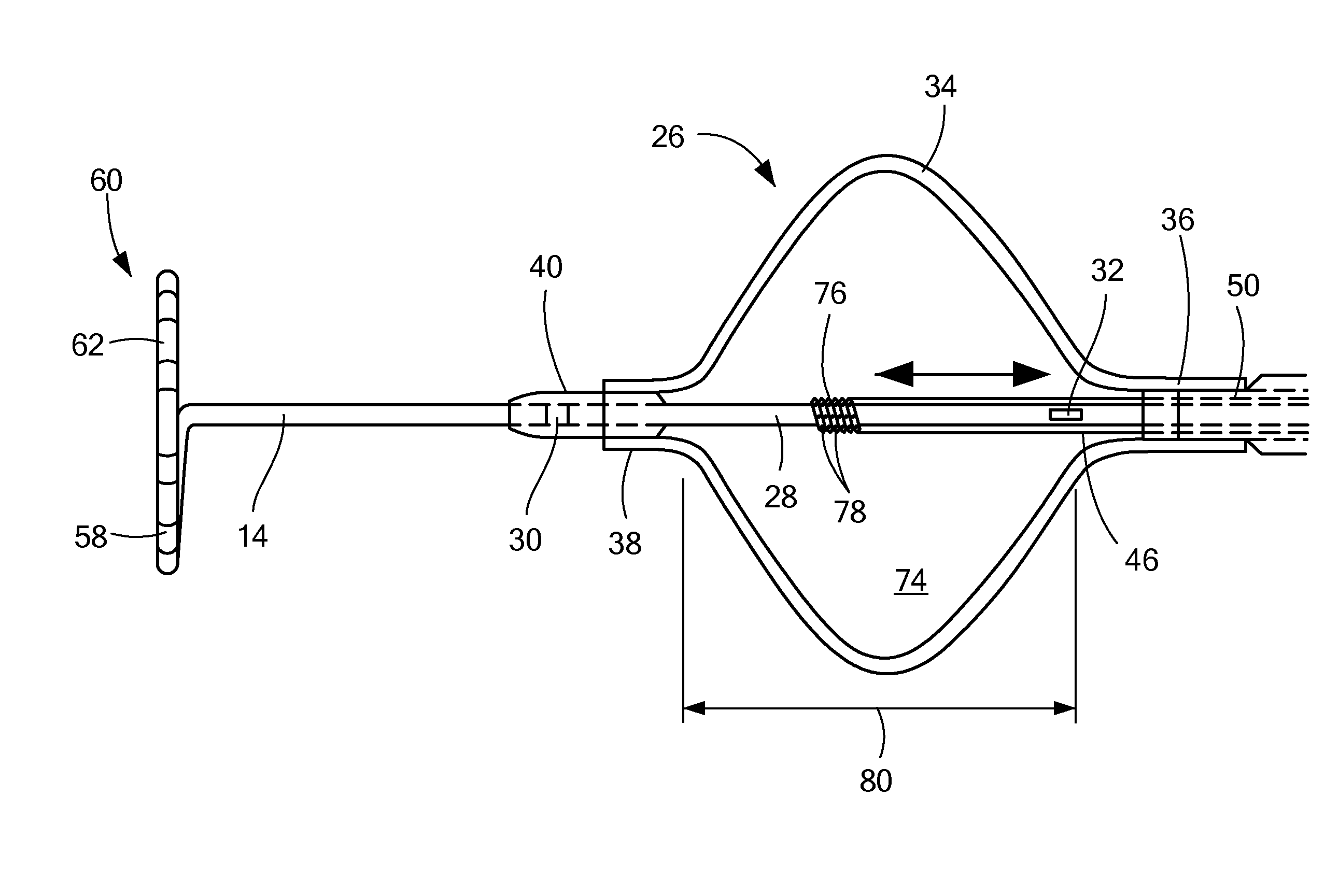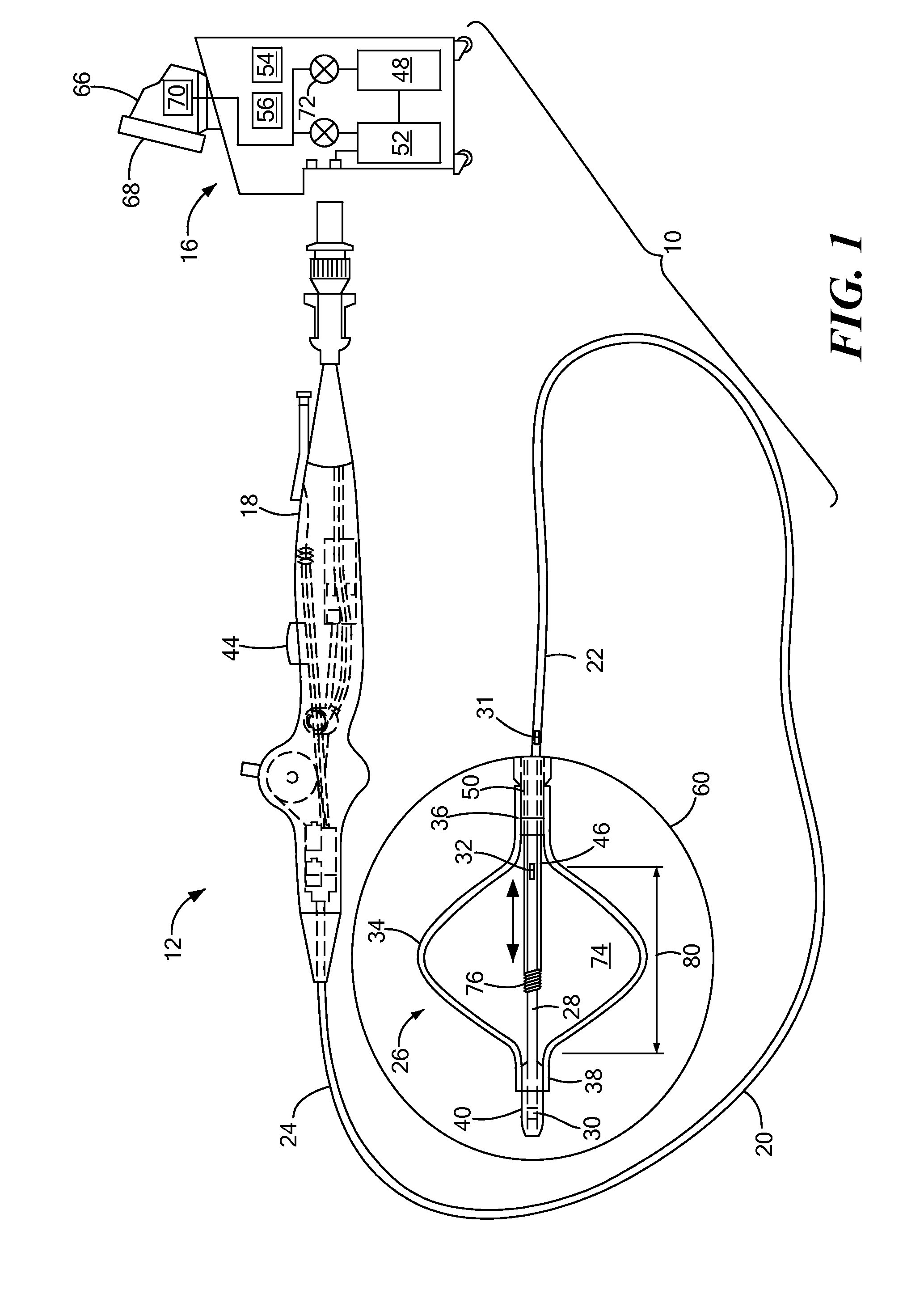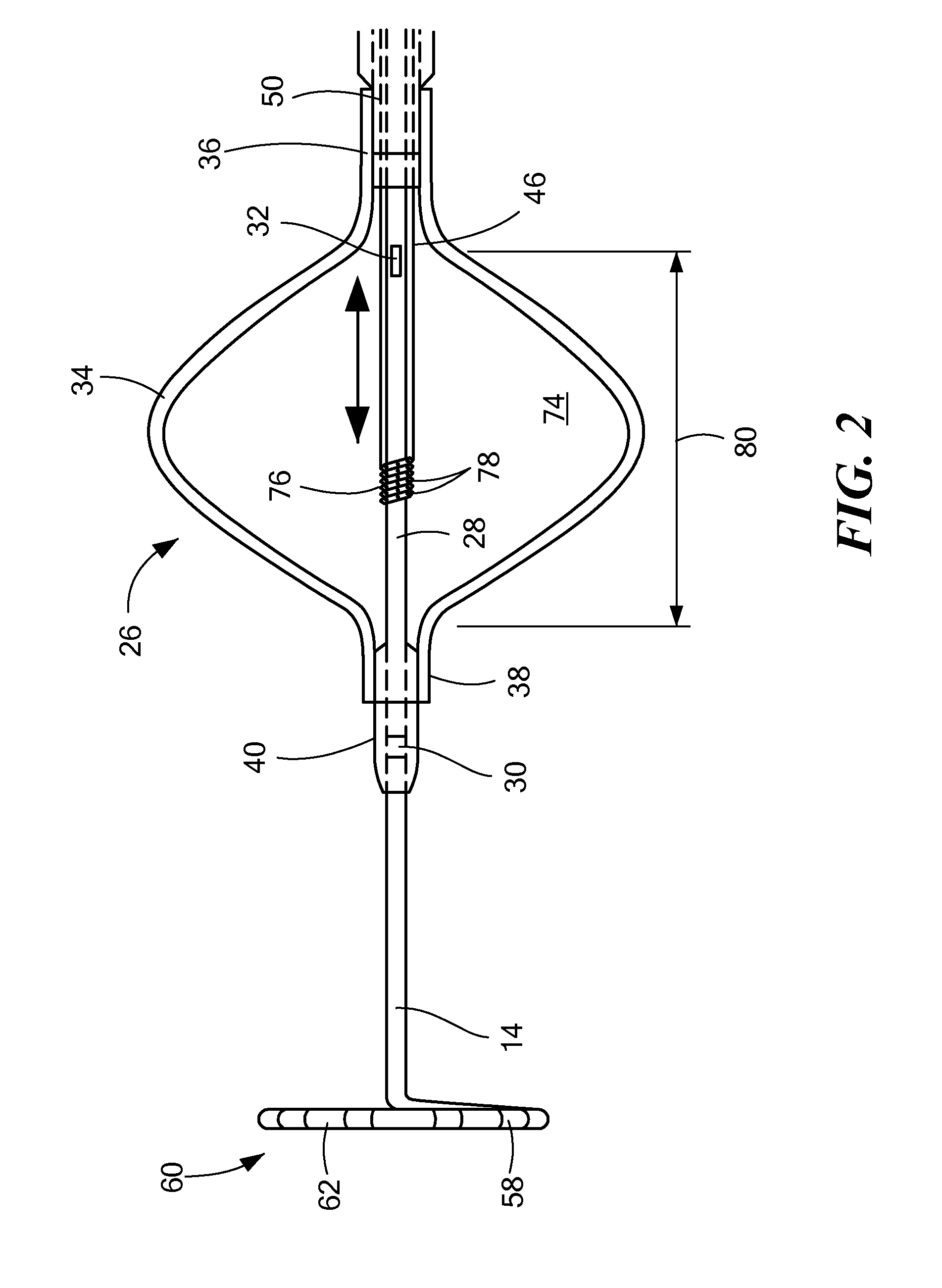Real-time lesion formation assessment
a real-time assessment and lesions technology, applied in the field of real-time assessment of lesions, can solve the problems of insufficient creation of reversible lesions to achieve electrical isolation, insufficient cryoballoon temperature, and high cost of operation
- Summary
- Abstract
- Description
- Claims
- Application Information
AI Technical Summary
Benefits of technology
Problems solved by technology
Method used
Image
Examples
first embodiment
[0036]Referring now to FIGS. 3A-3E, different embodiments of ways in which a temperature sensor may be coupled to a cryotreatment catheter. In the first embodiment shown in FIG. 3A, the distal temperature sensor 30 may be coupled to an outer surface of the nose 82. Although FIG. 3A shows the distal temperature sensor 30 protruding from the outer surface 84 of the nose 82, the figures may not be drawn to scale and the temperature sensor 30 may be thin enough that the sensor 30 lies flush or substantially flush with the outer surface 84 of the nose 82. Alternatively, the sensor 30 may be placed within a recessed area of the nose 82, thereby causing the sensor 30 to lie flush or substantially flush with the outer surface 84 of the nose 82. The sensor 30 may be a discrete sensor (that is, not be configured as a band or array of sensors) and may include one or more wires 86 that transmit signals (for example, temperature measurements by the sensor 30) to the console, and the wires 86 may...
second embodiment
[0037]In the second embodiment shown in FIG. 3B, the distal sensor 30 may be a discrete sensor and may be disposed within the guide wire lumen 28, but may protrude from the outer surface 84 of the nose 82. Alternatively, the temperature sensor 30 may be thin enough that the sensor 30 lies flush or substantially flush with the outer surface 84 of the nose 82 (as shown in FIG. 3B). The one or more wires 86 may be disposed within the guide wire lumen 28, and may travel the length of the device within the guide wire lumen 28 to the handle 18, and may also be disposed within the handle 18 and in electrical communication with the console as described in FIG. 3A.
third embodiment
[0038]In the third embodiment shown in FIG. 3C, the distal sensor 30 may be entirely disposed within the guide wire lumen 28, such that temperature measurements may be taken through the material of the guide wire lumen. In such an embodiment, the thickness of the wall of the guide wire lumen 28 may be thinnest proximate the distal sensor 30 to facilitate temperature measurement of the outside environment. The sensor's electrical wires 86 may be disposed within the guide wire lumen 28, and may travel the length of the device within the guide wire lumen 28 to the handle 18, and may also be disposed within the handle 18 and in electrical communication with the console as described in FIG. 3A.
PUM
 Login to View More
Login to View More Abstract
Description
Claims
Application Information
 Login to View More
Login to View More - R&D
- Intellectual Property
- Life Sciences
- Materials
- Tech Scout
- Unparalleled Data Quality
- Higher Quality Content
- 60% Fewer Hallucinations
Browse by: Latest US Patents, China's latest patents, Technical Efficacy Thesaurus, Application Domain, Technology Topic, Popular Technical Reports.
© 2025 PatSnap. All rights reserved.Legal|Privacy policy|Modern Slavery Act Transparency Statement|Sitemap|About US| Contact US: help@patsnap.com



